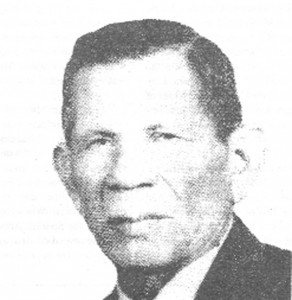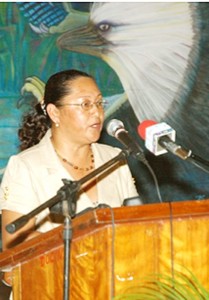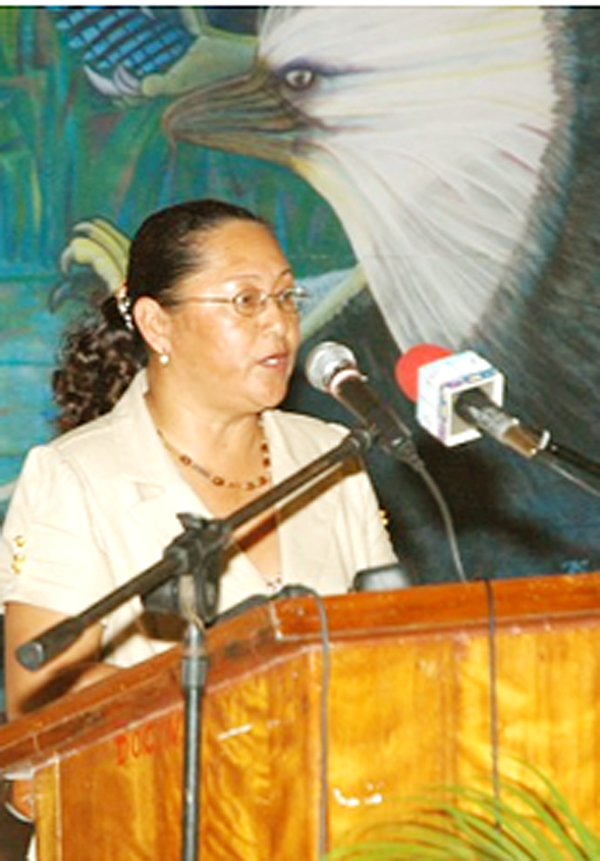On Wednesday, September 10, officially Amerindian Heritage Day, a small group of people made up mostly of students converged at the Umana Yana for a symposium on the life and work of Stephen Campbell, Guyana’s first indigenous MP.

It was the 51st anniversary of Campbell’s entry into the British Guiana Legislative Council, a symbolic achievement for the first people, albeit one that only registers in the national consciousness once a year during heritage month. (Really, if you were to ask the random man/woman on the street who Campbell was, there’s a very good chance that you might end up on the other side of a bewildered stare and a ‘huh?’)
Among the indigenous people, Campbell is still revered as a hero, particularly for his progressive stand on land rights which lay the foundation for the eventual recognition of their titles. He had hoped that his election to the legislature would stimulate integration and advancement. “So long have my people been regarded as children of the forest and as possessing a low mentality that they have been slow to emerge from the present state and taken their rightful position as Guyanese,” he said after his election. “This I know will be the commencement of a new history for my people who will no longer regard themselves as the underprivileged buck.”
Fast forward fifty years: the economic and educational disadvantages that Campbell tried to solve still plague the Amerindians, who remain arguably the most exploited group of people in the country (One can’t help but cringe at the sight of young Amerindian children, clad in grass skirts or various other forms of undress, as they are put on show during heritage month activities.) Although she enumerated the contributions of the PPP/C towards the development of the Amerindian population, Amerindian Affairs Minister Pauline Sukhai admitted that there are still many challenges facing the indigenous population. She spoke about an enduring indifference to Amerindians – “bordering on indifference, and bordering on exploitation” – that exists in a few pockets around the country. To confront this problem, she called for more support to ensure that Amerindians receive national acceptance.

Sukhai also emphasised the importance of emulating leaders like Campbell as well as the need to document their contributions. (Campbell has not been widely studied although Laureen Pierre has published several research papers on him, including a dissertation focusing on him as the first Amerindian national politician.)
The symposium was conceived in part to address the need for awareness. Four young people- Campbell’s great nephew Jed Vasconcellos, Odessa Paul, Sondra Cheong and Coleen Poon – made up the symposium panel that was tasked with presenting papers on Campbell’s life, his work in the legislature and his legacy.
The panel failed to produce any sterling example of scholarship (a visibly upset university student later complained that they took their presentations entirely from Pierre’s work – a charge which one presenter fended off with, “We’re young!”), on a few occasions they trafficked too comfortably in stereotypes (are fishing, craftsmanship and environmental awareness really “natural Amerindian skills”?) and ironies often eluded them (dressed smartly in a lilac suit but wearing too much make up, Paul, the reigning Miss Amerindian Heritage, told the audience: “Some Amerindians visit the city and automatically forget the simple, unique life they once lived.”)
Fortunately, the small audience was largely sympathetic. The only real point of debate was Poon’s assertion that “Campbell’s dream is finally a reality,” an idea that some of the indigenous rights advocates challenged. David James of the Amerindian People’s Association (APA) reminded that land rights are still a sore point. He also emphasised that when titles are granted, it is out of recognition of these rights and not as an act of benevolence on the part of the state. Jean La Rose, also of the APA, supported James’ conclusion, adding that more efforts can be made to teach Amerindian history in schools, since it is richer than the obligatory two paragraphs that are found in the curriculum texts. “We have made great strides,” she said. “But we still have a long way to go.”
Pierre’s research suggests that in his own time Campbell was frustrated in his attempts to use the tools of the legislature to influence change. He often worked without any support from his respective parties, initially the National Labour Front (NLF) and later the United Force (UF). For him, the indigenous people’s development was important to national development, though it proved a chore to shift the legislature’s emphasis to community development.
Campbell worked quietly behind the scenes at ministerial and departmental levels to get things done. He focused on land development, agriculture and education. He was against an exclusive formal western education system, believing in the need to retain indigenous culture, including languages, which he hoped would have been taught in schools. He was also an advocate for student scholarships.
Campbell’s work in the Amerindian communities began with the church. He was raised as a devoted catholic and served as a catechist in the Rupununi as part of the churches effort to convert tribes.
He made an immediate impression as a catechist, and his growing influence eventually led to tensions with the traditional Piaiman or medicine man. It was an ironic start for Campbell, given the church’s paternalistic attitude to the Indians and his own insistence on the need to preserve cultural traditions. Nevertheless, there was never any indication that Campbell ever experienced any conflict between religion and ethnicity. His personal credo, “Christianity applied offers the only solution,” was lived and his faith informed many of his political choices, including his unwillingness to join the godless communists. (He asked Lionel Luckhoo, leader of the NLF, the party for which Campbell would win a seat on the legislature: “Is your party going to be anti-communist?”)
The prospect of entering the political minefield did, however, weigh heavily on his mind and he remained undecided even after he won a seat on the legislature. (The NLF did not win any other seats and he offered his to Luckhoo who declined.) The call to duty to represent the people of the North West District as well as the wider indigenous population proved to be the decisive factor for his eventual acceptance.
Campbell died two weeks before independence. He was dubbed a conservative because his reservations about what it would hold for his people, especially the loss of traditional protections.
According to Pierre, he was not opposed to the idea of independence in principle, but he believed that it was premature, feeling that the colony was unprepared to cope with the transition.
It was for this reason that he continued to push for Amerindian land rights to be guaranteed in the independence constitution. His campaigning was successful, although titling only began more than ten years after in 1976. He was prophetic about the difficulties that lay ahead: “…Now [Amerindians] can truly be owners of their lands legally. This is only one of the roads which he has to tread, the other roads which he has to go through are the social and economic roads.”
The social and economic roads that Campbell alluded to were brought into sharp focus at the start of heritage month with the death of four young Amerindian children in the most deplorable circumstances – three in a dorm fire and one in a latrine. They were avoidable deaths.
They are sobering reminders amidst the momentary celebrations, the token tributes, and the kitschy pageantry and yes, even the endless parade of half naked bodies in grass skirts.

